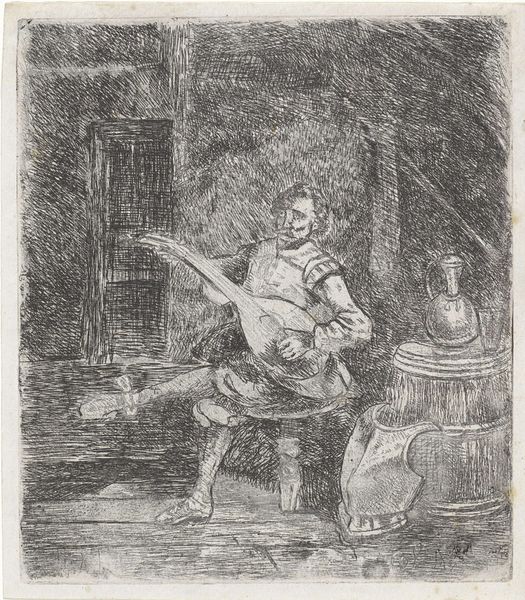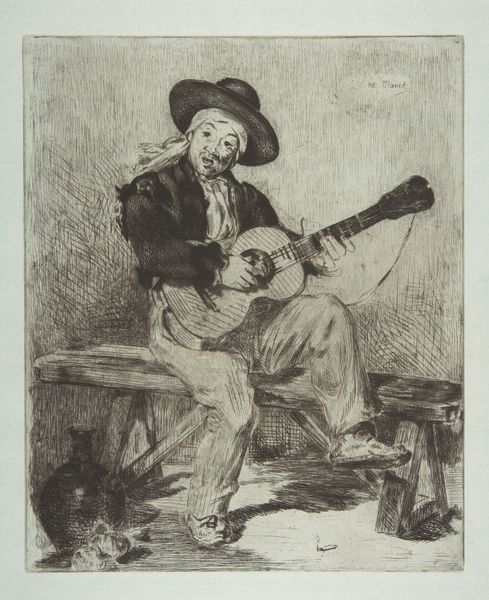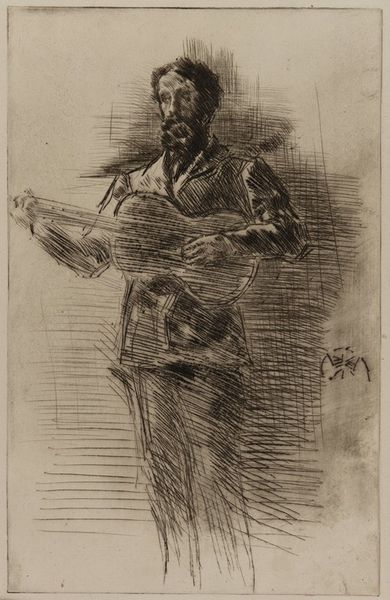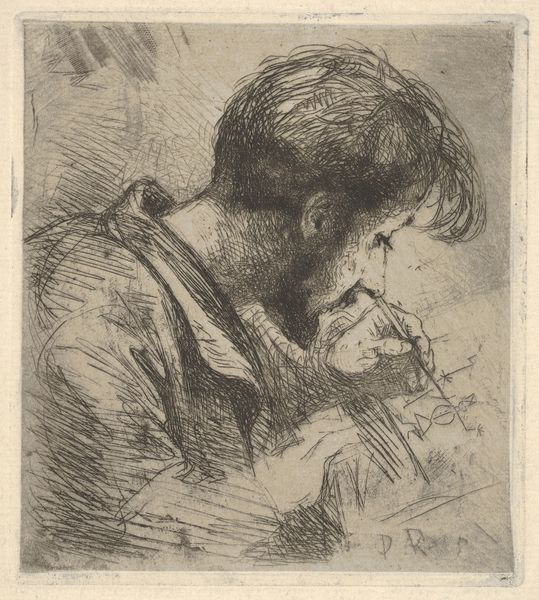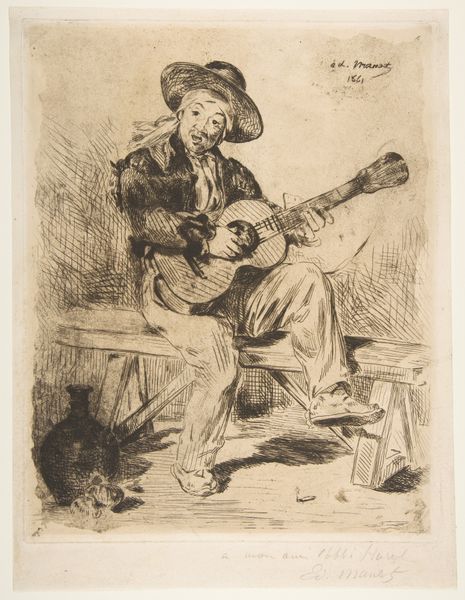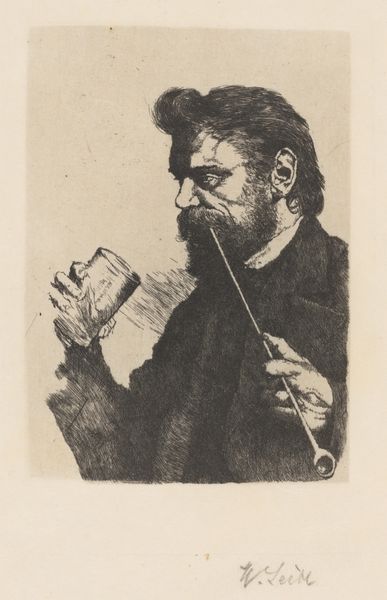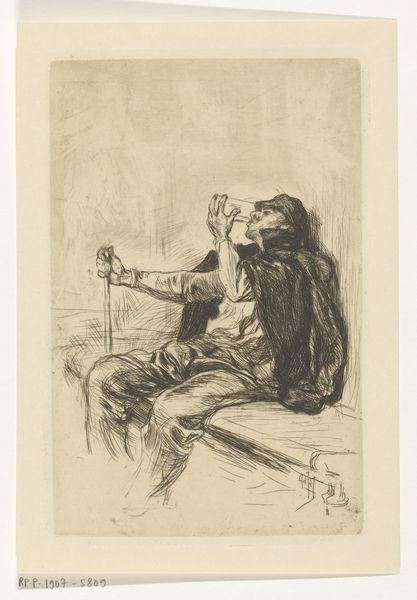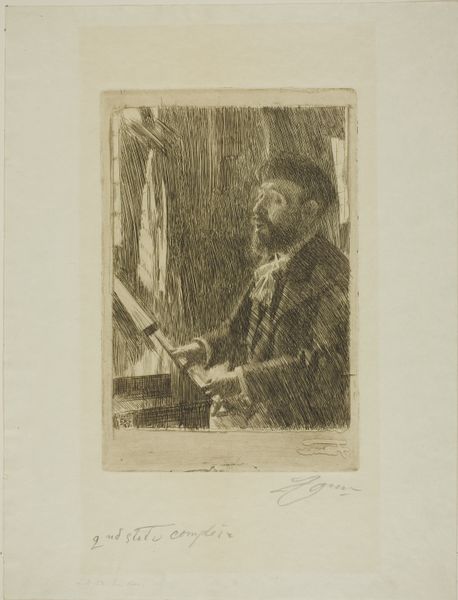
print, etching
#
portrait
# print
#
etching
#
portrait drawing
#
genre-painting
#
realism
Dimensions: plate: 27.6 x 21.1 cm (10 7/8 x 8 5/16 in.) sheet: 67.2 x 30.9 cm (26 7/16 x 12 3/16 in.)
Copyright: National Gallery of Art: CC0 1.0
Curator: François Bonvin’s "Guitar Player," created in 1861, immediately evokes a sense of melancholy, doesn't it? There's a somber air to it. Editor: Absolutely, and it’s enhanced by the tangible presence of the etching itself. Look at the depth achieved using that process! You can almost feel the grit of the plate, and see how the artist explored texture. The materiality underscores the realism, elevating what might have been a mere genre scene into something more profound about the artist's craft. Curator: I agree. Bonvin's print places itself firmly in the Realist movement, focusing on an ordinary subject. His paintings of working-class individuals brought scenes of everyday life into the traditionally academic Salon exhibitions, disrupting established hierarchies in art and the institutions showing them. How was his focus on the common man received at the time? Editor: Mixed, naturally. Some critics lauded his honesty and relatable subject matter; others saw it as a rejection of history painting and idealized forms – a deliberate affront to the establishment. What tools were likely used for a work like this? Curator: As an etching, Bonvin would have likely used needles, scrapers, and burnishers to manipulate the metal plate and develop the tones of the print. The paper selection itself contributes to the overall impression – was it a common material or chosen specifically for the piece? Editor: Probably something relatively accessible; remember, the point was to democratize artmaking and art ownership through prints. Focusing on ordinary folks and simple pleasures removed art making from academic painting, making both its subject and means attainable. This aesthetic choice democratized the medium. The proliferation of printed images also shifted ideas about art and the audience, how do you read this one specifically? Curator: The pose, the instrument, even the sitter’s dress contribute to a general narrative about the romanticism of everyday life – of quiet moments amidst the noise of industrializing Paris. Bonvin offered the Salon visitors a respite in humble portraiture and the burgeoning art market a relatively cheap means of access. Editor: Bonvin's embrace of Realism provided new avenues for examining life, labor, and cultural production, reminding us that the very means and materials we use shape both what we create and how others may encounter it. Curator: Indeed. His ability to imbue the ordinary with such quiet dignity speaks to the power of art to democratize our perception of the world and disrupt existing social mores.
Comments
No comments
Be the first to comment and join the conversation on the ultimate creative platform.


